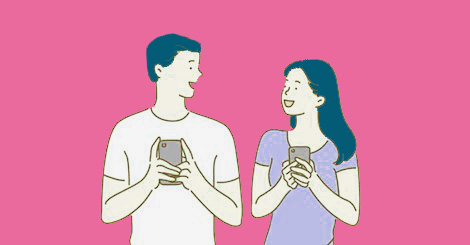Types of Prescription Drugs We Help You Get Treatment For:
- Oxymorphone
- Propoxyphene
- Hydrocodone
- Codeine
- Diphenoxylate
- Diazepam
- Benzodiazepines
- Meperidine
- Fentanyl
- Ketamine
- Morphine
- Oxycodone
- Pentobarbital
- Alprazolam
- Ambobarbital
- Secobarbital
- Tuinal
- Barbituates
- Phenobarbital
- Amphetamine
- Ayahuasca
- Methylphenidate
- Rohypnol
Any pharmaceutical drug that legally requires medical prescription is considered a prescription drug. It is the opposite of over-the-counter drugs, which can be obtained without a doctor’s approval.
The reason some drugs are controlled is because of their addictive nature and the high risk of developing dependence in individuals who misuse them.
There are three classes of prescription drugs that are commonly misused: opioids, depressants, and stimulants. Opioids are used to treat pain; depressants can treat anxiety and sleep disorders; and stimulants can be used to boost energy and alertness in an individual.
Branded Market Names
Common market names for prescription drugs include Prilosec, Norvasc, Zocor, Prinivil, Zestril, Zithromax, and Synthroid.
Street Names for Prescription Drugs
-Apache
-China Girl
-Hydro
-Narco
-Smack
-Morpho
-Blue Heaven
History
For more than a hundred years, prescription drugs have been abused all over the world. In the 1800s, laudanum, a mixture of alcohol and opium, was first used by doctors to treat pain, anxiety, coughing, diarrhea, and sleeplessness. However, its addictive properties quickly got people hooked.
Laudanum was more frequently abused by women, because at that time men were abusing alcohol, and they did not allow women to visit bars. This caused more women to turn to laudanum, the drug that was often prescribed for problems with pregnancy, childbirth, and menstrual cramps.
How Prescription Drugs are Abused
Nowadays, prescription drugs are frequently abused by teenagers, as they believe it is safer than illegal street drugs. This misconception stems from the fact that the substances are prescribed by doctors, leading teens to think that misusing them would be less risky.
This goes without saying that taking larger doses of a prescription drug, or taking it for longer than is recommended, is just as dangerous as abusing any other type of drug.
Prescription drugs are often abused because of the high they produce. They give users a sense of euphoria, making them feel more confident and capable of socializing.
Signs of Addiction
-Inability to feel pain at normal levels
-Drowsiness
-Confusion
-Nausea
-Constipation
-Vomiting
-Chills
-Slurred speech
-Dilated pupils
Physical Effects
The effects of prescription drug abuse will vary from person to person—no two cases are exactly the same. It will depend on the health condition, age, gender, body weight, rate of metabolism, drug taken, dosage taken, frequency of use, and whether they abuse another substance or not.
-Respiratory depression
-Respiratory arrest
-Hypotension
-Hypertension
-Coma
-Seizures
-Tremors
-Addiction
-Death
Mental and Psychological Effects of Prescription Drugs
-Impaired memory
-Cognitive problems
-Lack of coordination
-Aggressiveness
-Paranoia
-Hallucinations
-Self-harming behavior
-Contemplating suicide
Treatment for Prescription Drug Addiction
Prescription drug addiction may be treated through medications. Find a treatment facility for the addicted individual, and they will undergo a medical assessment. Medical professionals will be able to come up with a treatment plan for the patient, based on their condition.
They will likely undergo detoxification, during which they will be slowly taken off the drug. Their intake will gradually be lowered, while withdrawal symptoms are managed.
Medications used for the treatment of prescription opioid addiction include methadone, naltrexone, and buprenorphine. These drugs can help fight cravings, allowing the patient to avoid relapsing.
Withdrawal Symptoms
When a person who has developed dependence attempts to quit using the drug, withdrawal symptoms may occur. Just like the physical and mental effects of prescription drug abuse, these symptoms may vary from person to person.
-Tremors
-Loss of self-confidence
-Decreased sense of self-worth
-Excessive sweating
-Muscle pain
-Insomnia
-Depression
-Seizures
Rehabilitation
Aside from detoxification and medications, the patient may also undergo behavioral treatments. This part of the rehabilitation process helps the person change their unhealthy choices. This allows them to get back to living a drug-free life. They will be taught various coping strategies, and be guided on what to do to avoid relapse.
With proper counseling, the patient will be able to learn how to maintain their sober lifestyle. It can be done through group counseling sessions, family counseling, or even individually.
They can rebuild their personal relationships and focus their energy on healthy, productive activities. In no time, they will be able to readjust to their life and role in society.
[cs_button button_size=”btn-lg” button_title=”Call Now” button_link=”tel:+18553391112″ button_border=”yes” =”null” button_icon_position=”left” button_type=”rounded” button_target=”_self”]







